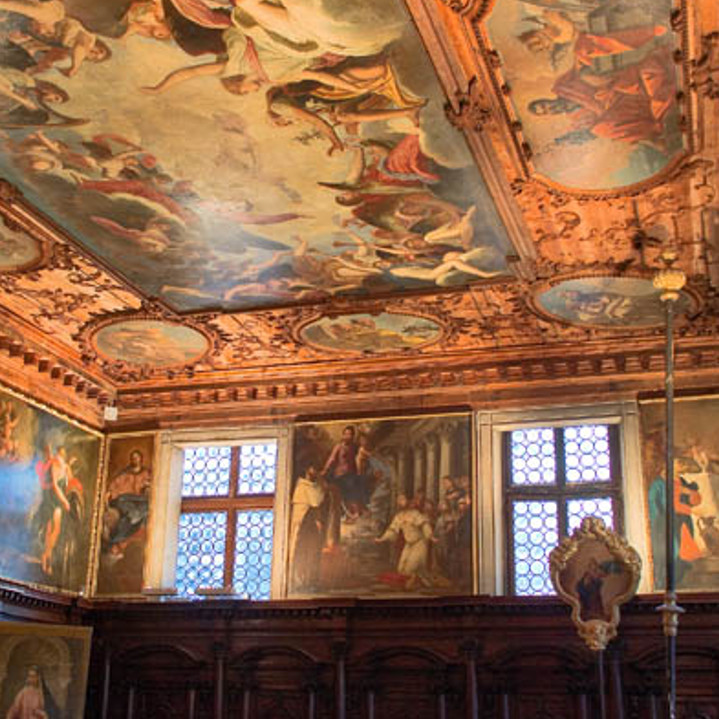You are here
Venice and its food
HISTORY, TRADITIONS AND SECRETS OF THE VENETIAN CUISINE

Cicchetti
ph. Giovanni Veronese @giovanniv63 via Instagram
The Venetian cuisine is part of the thousand-year history of the Serenissima republic. It represents a unique gastronomic heritage, an extraordinary crossroads of cultures and flavours.
As an ancient maritime city, Venice has its own distinct cuisine, combining ingredients from many other kitchens such as Arab, Jewish, and more generally from the East, as well as from Northern Europe.
The Venetian culinary tradition features, for example, dried cod from Norway (called baccalà by the Venetians), or rice and exotic spices from Asia. In the past, sugar, raisins and almonds (used in many Venetian recipes) came to Venice from the Eastern Mediterranean; from Istria, Puglia and Greece oil and wines, all expertly blended with indigenous products, fish and game of the Venice lagoon, and the fresh vegetables of the islands and the hinterland.

Risotto di gò
ph. Francesca Passerotti @my_real_venice via Instagram
Sarde in saór, or sweet-and-sour sardines, is a classic Venetian dish, in which sardines are deep-fried then left to marinate with onions, raisins, pine nuts and vinegar. Born in 14th century Venice, sardines in saór (literally, ‘flavour’), is one of the most popular fish dishes of the Venice Lagoon, that makes a perfect starter. It’s commonly found served as cichéti (small snacks served with aperitifs) in Venetian bàcari (wine bars).
Risi e bisi is made with fresh spring peas and rice, a cross between a thick soup and a liquid risotto, traditionally served to the Doge on April 25, the Feast of St. Mark's, patron saint of Venice (read a short history of rice in Venice).
Risotto di gò is another classic dishes of the Venetian lagoon cuisine. It is a tasty risotto prepared with a little fish from the lagoon, the grass goby, called in Venetian dialect gò (ghiozzo in Italian).

Carciofi violetti di Sant'Erasmo
ph. Comune di Venezia
Fegato alla Veneziana (finely sliced liver with sweet and sour onions) is one of the most popular Venetian recipes, combining liver’s earthy flavour with the sweetness of the onions. This traditional dish has ancient origins, dating back to the Romans, who used to cook liver with figs to tone down its rather strong taste and aroma. Venetians later replaced figs with onions, especially Chioggia white onions.
From the vegetable gardens on Sant'Erasmo and the Vignole island come still today the vegetables sold at Rialto market, in particular the delicious purple artichokes of Sant'Erasmo, SlowFood presidium.
The castraùre, i.e. the first flowering tops of the artichokes, are traditionally served raw in a salad, lightly sprinkled with olive oil, salt and black pepper, and topped with shaved Grana Padano cheese.

Caffè Florian
ph. Valentina Messina @lamentina_ via Instagram
Baìcoli, zaéti, bussolài are one of the most popular goloséssi, as the Venetians call the small pastries eaten at the end of a meal or as an afternoon snack. These biscuits are ideal for dipping in coffee, hot chocolate, tea, zabaglione or dessert wines.
Coffee culture was first introduced in Venice and later spread throughout Italy. Caffè Florian is considered the Italy’s oldest cafè: it has celebrated its three hundreds’ anniversary of uninterrupted activity, since 29th December 1720, when it was opened by Floriano Francescon. Discover Venice's historic coffehouses.
Venetians have been cultivating wine grapes for centuries. Vineyards are mostly widespread on the islands, but are also present in Venice’s historical centre: an example is the ones cultivated in the Discalced Carmelite friars’ Mystical Garden, next to the train station. The Dorona grape, native to the Venetian Lagoon, is a white grape variety appreciated by nobles and the Doges of Venice.





